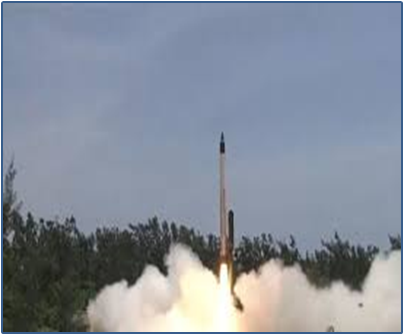CURRENT AFFAIRS
Get the most updated and recent current affair content on Padhaikaro.com
Hypersonic Missile
- Vaid's ICS, Lucknow
- 18, Oct 2021

China has recently tested a nuclear capable hypersonic missile.
About HSTDV
- HSTDV is an unmanned scramjet vehicle with a capability to travel at six times the speed of sound.
- The scramjets are a variant of a category of jet engines called the air-breathing engines.
- The ability of engines to handle airflows of speeds in multiples of the speed of sound gives it a capability of operating at those speeds.
- Hypersonic speeds are those which are five times or more than the speed of sound.
- The unit tested by the DRDO can achieve upto six times the speed of sound or Mach 6, which is well over 7000 km per hour or around two km per second.
Its development
- The DRDO started on the development of the engine in the early 2010s.
- The ISRO has also worked on the development of the technology and has successfully tested a system in 2016.
- DRDO too has conducted a test of this system in June 2019.
- The special project of the DRDO consisted of contributions from its multiple facilities including the Pune headquartered Armament and Combat Engineering Cluster.
FACTS FOR PRELIMS
996 culture:
- The 996 working hour system is a work schedule practiced by some companies in the People’s Republic of China.
- It derives its name from its requirement that employees work from 9:00 am to 9:00 pm, 6 days per week; i.e. 72 hours per week.
‘Net Minus’ paradigm:
- In the run up to the upcoming U.N. Climate Change Conference (COP26) in Glasgow, India has come under pressure, especially from the U.S. and U.K, to announce more ambitious emission cuts, beyond what came out of its Paris commitments and to provide a deadline by which it will reach ‘Net Zero’’ emissions.
- India’s line of argument has been that developing countries need space to grow and developed countries must move to a ‘Net Minus’ paradigm and meet climate finance obligations first.
- ‘Net Minus’ paradigm calls for Carbon Dioxide Removal (CDR). As it is the opposite of emissions, these practices or technologies are often described as achieving “negative emissions” or “sinks”.
- Indian Finance Minister who is on a U.S. visit has repeatedly raised or discussed the issue of climate finance obligations and technology transfer from the developed countries.
- Developed countries have committed under the Paris Agreement to allocate $100 billion per year from 2020 onwards to facilitate emission cuts in poorer countries and also to effect technology transfer.